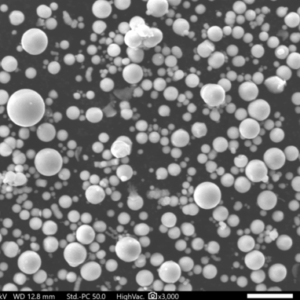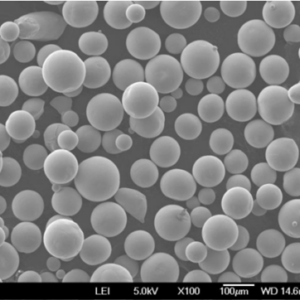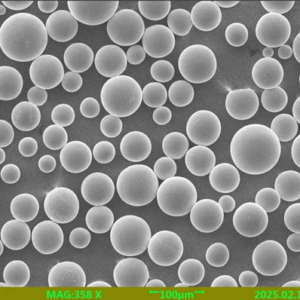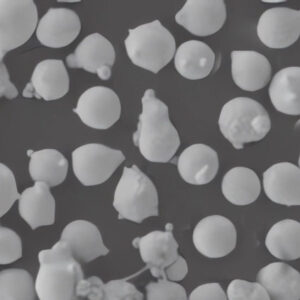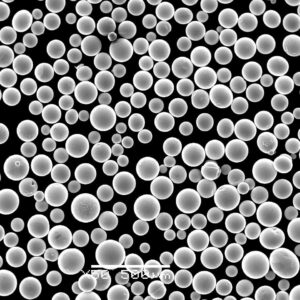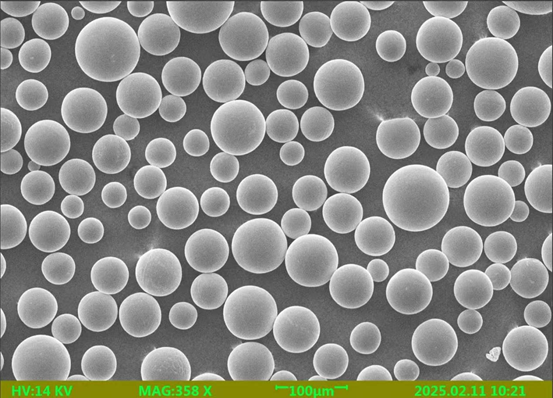パウダーの概要 大判印刷
大判印刷は工業印刷の世界を大きく変えるもので、高品質の画像、文字、デザインを大規模に作成することができます。しかし、大判印刷で使用されるパウダーが、最終製品の品質、耐久性、効率に重要な役割を果たしていることをご存知でしょうか?このガイドでは、利用可能なパウダーの種類、組成、特性から、用途、利点、制限に至るまで、大判印刷用のパウダーについて詳しく解説します。
あなたがエンジニアであれ、印刷業者であれ、あるいは単に大判印刷の複雑さについて興味があるだけであれ、この記事は、適切なパウダーがあなたの印刷プロジェクトにどのような違いをもたらすかを理解するために必要なあらゆる洞察を提供する。
パウダーの種類 大判印刷
大判印刷では、希望する仕上がりによってさまざまな種類のパウダーが使用されます。最も一般的に使用されるパウダーとその特徴を探ってみよう。
| パウダータイプ | 構成 | プロパティ | アプリケーション | メリット | 制限事項 |
|---|---|---|---|---|---|
| アルミニウムパウダー | アルミニウム粒子 | 軽量、耐久性 | 航空宇宙部品、自動車部品 | 高い強度対重量比 | 適切にコーティングされないと酸化する可能性がある |
| 銅粉 | 銅粒子 | 導電性、耐食性 | 電気部品、熱交換器 | 優れた熱伝導性 | 他の金属に比べて高価 |
| ステンレススチール・パウダー | 鉄、クロム、ニッケル | 耐食性、強度 | 医療機器、食品加工機器 | 耐久性に優れ、錆びにくい | 重い、コストがかかる |
| チタンパウダー | チタン粒子 | 高強度、軽量 | 医療用インプラント、航空宇宙部品 | 生体適合性、強度、軽量 | 原材料高 |
| ニッケルパウダー | ニッケル粒子 | 強靭、耐食性 | タービンブレード、バッテリー | 優れた機械的特性 | 処理が難しい場合がある |
| 亜鉛パウダー | 亜鉛粒子 | 低融点、耐久性 | 亜鉛メッキ、バッテリー | 腐食防止に効果的 | 機械的強度に限界 |
| 鉄粉 | 鉄粒子 | 強力な磁気特性 | 自動車部品、機械部品 | 費用対効果が高く、入手が容易 | 処理しないと錆びやすい |
| ブロンズ・パウダー | 銅、スズ | 耐久性、耐食性 | 彫刻、装飾品 | 美的アピール、強い | 銅含有によるコスト高 |
| コバルト・クロム粉 | コバルト、クロム | 耐摩耗性、生体適合性 | 歯科インプラント、タービンエンジン | 高ストレス用途に最適 | 高価で加工が難しい |
| マグネシウム・パウダー | マグネシウム粒子 | 軽量で丈夫 | 自動車、航空宇宙用途 | 高い強度対重量比 | 粉末状で可燃性 |
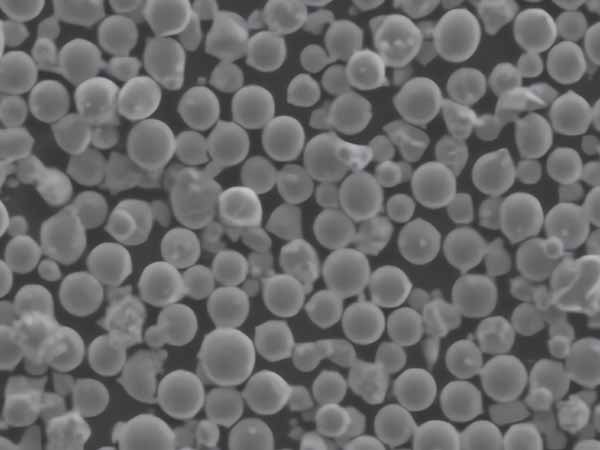
大判印刷用パウダーの組成
大判印刷に使用されるパウダーの組成は、様々な用途への適合性を決定する。各パウダータイプはベースメタルまたは合金で構成され、要求される機械的、熱的、電気的特性に基づいて選択されます。
| パウダータイプ | 一次エレメント | 合金元素 | 構成詳細 |
|---|---|---|---|
| アルミニウムパウダー | アルミニウム | シリコン、銅、マグネシウム | 強度、導電性、耐食性を高めるために合金化されることが多い。 |
| 銅粉 | 銅 | 亜鉛、スズ | 真鍮(銅-亜鉛)、青銅(銅-錫)、様々な機械的特性用 |
| ステンレススチール・パウダー | 鉄 | クロム、ニッケル、モリブデン | 具体的な等級は、304、316など、用途によって異なる。 |
| チタンパウダー | チタン | アルミニウム、バナジウム | 一般的な合金はTi-6Al-4Vで、高強度と軽量で知られる。 |
| ニッケルパウダー | ニッケル | クロム、モリブデン | インコネルなどの高性能合金によく使用される。 |
| 亜鉛パウダー | 亜鉛 | アルミニウム、銅 | 亜鉛めっきの特性を高めるため、軽微な合金元素を含むことがある。 |
| 鉄粉 | 鉄 | カーボン、マンガン | 低炭素鋼と高炭素鋼があり、合金鋼もある。 |
| ブロンズ・パウダー | 銅 | 錫 | 錫の割合は硬度と耐摩耗性に影響する。 |
| コバルト・クロム粉 | コバルト | クロム、タングステン | コバルト-クロム-タングステン合金は耐摩耗性が高く、生体適合性に優れている。 |
| マグネシウム・パウダー | マグネシウム | アルミニウム、亜鉛 | AZ31Bは、強度と成形性を兼ね備えた一般的な合金である。 |
大判印刷用パウダーの特徴
大判印刷に使用されるパウダーの特性を理解することは、作業に適した材料を選択する上で非常に重要です。以下は、異なるパウダーの性能を定義する主な特性です。
| 特徴 | 説明 | 印刷との関連性 |
|---|---|---|
| 粒子径 | 個々の粉末粒子の大きさを指す | 印刷の滑らかさと解像度に影響する。 |
| 流動性 | パウダーの流れやすさ、広がりやすさ | 印刷時に均等に分配するために重要 |
| 球形度 | 粉体粒子の丸み | 真球度が高いほど、流動性と充填密度が向上する。 |
| 純度 | 汚染物質や不要な要素がないこと | 高い純度により、一貫した予測可能な印刷結果を実現 |
| 密度 | 粉体の単位体積当たりの質量 | 最終的な印刷物の強度と重量に影響する。 |
| 含水率 | 粉末に含まれる水分量 | ダマになるのを防ぎ、スムーズな印刷を実現するには、含水率を低くする必要がある。 |
| 耐酸化性 | 空気に触れても酸化しにくい | 保管中および印刷中のパウダーの完全性を維持するために重要である。 |
| 熱伝導率 | 粉体の熱伝導率 | 印刷時の冷却固化プロセスに影響を与える |
| 電気伝導率 | 電気を通す能力 | 電気的接続性を必要とするアプリケーションに重要 |
| 耐食性 | 環境要因による腐食に耐える能力 | 過酷な条件下での耐久性に不可欠 |
粉末の粒度分布 大判印刷
パウダーの粒度分布は、プリントの最終的な質感から細部の精度に至るまで、すべてに影響します。粒度分布が均一なパウダーは、プリント全体に一貫した品質を保証します。
| 粒子径範囲 | 代表的なアプリケーション | メリット |
|---|---|---|
| <10 µm | 繊細なディテール、滑らかな表面 | 高解像度、優れた表面仕上げ |
| 10-50 µm | 汎用印刷 | 解像度と流動性のバランス |
| 50-100 µm | ディテールの少ない構造部品 | 蒸着速度が速く、大型部品に最適 |
| >100 µm | 粗いテクスチャー、大量印刷 | 印刷の高速化、ノズルの目詰まりの低減 |
大判印刷用パウダーの用途
大判印刷用パウダーは様々な業界で使用されており、それぞれがパウダーに特定の特性を要求している。以下は主な用途である。
| 産業 | 申し込み | 好ましいパウダータイプ | 優先理由 |
|---|---|---|---|
| 航空宇宙 | ジェットエンジン部品、構造部品 | チタン、アルミニウム | 軽量、高強度 |
| 自動車 | エンジン部品、排気部品 | ステンレススチール、アルミニウム | 耐食性、耐久性 |
| メディカル | インプラント、補綴 | チタン、コバルトクロム | 生体適合性、強度 |
| エレクトロニクス | 回路基板、コネクター | 銅、銀 | 高い導電性 |
| 建設 | 建築模型、構造部品 | 鉄、鋼 | 費用対効果が高く、強い |
| エネルギー | タービンブレード、バッテリー部品 | ニッケル、コバルト | 耐高温性、耐久性 |
| アート&デザイン | 彫刻、装飾品 | ブロンズ、ステンレススチール | 美しさ、耐久性 |
| 食品加工 | 設備、器具 | ステンレス | 非反応性、耐腐食性 |
| マリン | ボート部品、水中構造物 | アルミニウム、ステンレス鋼 | 耐食性、軽量 |
| ディフェンス | 装甲車、武器部品 | チタン、スチール | 高強度、耐衝撃性 |
大判印刷用パウダーの仕様、サイズ、グレード、規格
大判印刷用のパウダーを選ぶ際には、用途の基準を満たす仕様、サイズ、グレードを検討することが不可欠です。
| パウダータイプ | サイズ範囲 | 共通グレード | 関連規格 |
| アルミニウムパウダー | 10-100 µm | 6061, 7075 | ASMB928、AMS4068 |
| 銅粉 | 10-50 µm | C10100、C11000 | アストレムB170、アストレムB187 |
| ステンレススチール・パウダー | 15-100 µm | 304L、316L | アストレムA276、アストレムF138 |
| チタンパウダー | 15-50 µm | Ti-6Al-4V | アストマ F2924、アムス 4998 |
| ニッケルパウダー | 20-80 µm | インコネル625、718 | ASMB443、AMS5666 |
| 亜鉛パウダー | 10-60 µm | Zn99.9、ZnCu | ASMB846、ISO14977 |
| 鉄粉 | 20-100 µm | Fe-C、Fe-Si | アストレムA848、アストレムB783 |
ブロンズ・パウダー | 10-50 µm | CuSn10, CuSn12 | アストマムB427、エン1982 |
| コバルト・クロム粉 | 20-70 µm | CoCrMo | ASTM F75、ISO 5832-4 |
| マグネシウム・パウダー | 10-60 µm | AZ31B | ASMB107、AMS4377 |
大判印刷用パウダーのサプライヤーと価格
パウダーのコストは、種類、品質、供給業者によって異なる。以下は一般的なサプライヤーと価格帯の概要です。
| サプライヤー | パウダータイプ | 価格帯(kgあたり) | 所在地 | 特筆すべき特徴 |
|---|---|---|---|---|
| ヘガネス | 鉄、ステンレス | $15 – $50 | スウェーデン | 高品質の金属粉末、幅広い合金 |
| カーペンター添加剤 | チタン、ニッケル | $100 – $500 | アメリカ | 高性能パウダーに特化 |
| GKNアディティブ | アルミニウム、マグネシウム | $50 – $150 | ドイツ | 航空宇宙向け軽量素材に注力 |
| LPWテクノロジー | アルミニウム、ステンレス鋼 | $50 – $200 | 英国 | 粉体品質のトレーサビリティと一貫性を提供 |
| サンドビック | コバルトクロム、チタン | $150 – $600 | スウェーデン | 高純度の特殊合金で知られる |
| AMG 先進冶金グループ | 鉄、銅 | $20 – $100 | オランダ | 様々な産業向けに多種多様なパウダーを提供 |
| プラクセア・サーフェス・テクノロジー | ニッケル、アルミニウム | $75 – $300 | アメリカ | 広範な研究開発による高品質パウダー |
| バリメット | アルミニウム、亜鉛 | $25 – $120 | アメリカ | 流動性を高める球状粉末に注目 |
| ケナメタル | タングステン、コバルトクロム | $200 – $800 | アメリカ | 硬質材料と耐摩耗性パウダーで知られる |
| VDMメタルズ | ニッケル、コバルト | $150 – $700 | ドイツ | 高性能の耐食性パウダーに特化 |
さまざまなパウダーの長所と短所を比較する 大判印刷
適切なパウダーを選ぶには、各タイプの長所と短所を比較検討する必要があります。ここでは、十分な情報を得た上で決断するための比較を紹介する。
| パウダータイプ | 長所 | 短所 |
|---|---|---|
| アルミニウムパウダー | 軽量、耐腐食性 | 酸化しやすい、融点が低い |
| 銅粉 | 優れた導電性、耐食性 | 高価、アルミニウムより重い |
| ステンレススチール・パウダー | 強靭、耐食性 | 重く、扱いが難しい |
| チタンパウダー | 高い強度対重量比、生体適合性 | 非常に高価で複雑な処理が必要 |
| ニッケルパウダー | 高温耐性、強靭 | 処理が難しく、コストがかかる |
| 亜鉛パウダー | コストパフォーマンスが高く、亜鉛めっきに適している。 | 強度が低く、融点が低い |
| 鉄粉 | コストパフォーマンス、磁気特性 | 錆びやすいため、耐久性のための処理が必要 |
| ブロンズ・パウダー | 美しさ、耐久性 | 銅含有によるコスト高 |
| コバルト・クロム粉 | 耐摩耗性、生体適合性 | 高価で加工が難しい |
| マグネシウム・パウダー | 非常に軽量で丈夫 | 粉末状で引火性が高く、高価である。 |
大判印刷用パウダーの利点
大判印刷にパウダーを使用することにはいくつかの利点があり、多くの産業で好まれている。
精度とディテール
パウダーベースの印刷は、非常に繊細なディテールと滑らかな表面を可能にし、これは航空宇宙部品や医療用インプラントなどの用途に不可欠である。
材料効率
パウダー印刷は、未使用のパウダーを将来の印刷用にリサイクルできることが多いため、廃棄物を減らすことができ、長期的に費用対効果の高いソリューションとなる。
カスタマイズ
粉末印刷では、異なる粉末を混合したり、印刷パラメーターを変更したりすることで、材料特性を簡単に調整できるため、カスタムメイドの部品を作ることができる。
スピード
大判粉末印刷は、特に従来の工程では複数の工程を必要とするような複雑な部品の場合、従来の製造方法よりも高速で製造することができる。
大判印刷用パウダーの限界
大判印刷用のパウダーには多くの利点があるが、考慮すべき制限もある。
コスト
高品質の粉末、特にチタンやコバルトクロムなどの希少合金や複雑な合金から作られた粉末は高価であるため、高価値の用途に限定される可能性がある。
処理の複雑さ
大判印刷用のパウダーの取り扱いと処理には、特殊な設備と専門知識が必要で、これが生産全体のコストと複雑さを増すことになる。
安全性への懸念
特にマグネシウムやその他の反応性金属から作られた粉末は、適切に扱わなければ危険な場合があり、厳格な安全プロトコルが必要となる。

パウダーの比較 大判印刷:性能と応用
どのパウダーがあなたの特定のニーズに最も適しているかを判断するために、性能と用途の比較をご覧ください。
| パウダータイプ | 強さ | 最適 | 不適 |
|---|---|---|---|
| アルミニウムパウダー | 高い強度対重量 | 航空宇宙、自動車部品 | 超高温を必要とする用途 |
| 銅粉 | 優れた導電性 | 電気部品、熱交換器 | 重量に敏感なアプリケーション |
| ステンレススチール・パウダー | 耐食性、強度 | 医療機器、食品加工機器 | 軽量または超微細アプリケーション |
| チタンパウダー | 高強度、軽量 | 医療用インプラント、航空宇宙部品 | 予算重視のプロジェクト |
| ニッケルパウダー | 強靭、耐食性 | タービンブレード、高温用途 | 軽量アプリケーション |
| 亜鉛パウダー | 低融点 | 亜鉛メッキ、バッテリー | 高ストレスまたは高温用途 |
| 鉄粉 | 強力な磁気特性 | 自動車部品、機械部品 | 腐食に敏感な環境 |
| ブロンズ・パウダー | 耐久性、審美性 | 彫刻、装飾品 | コスト重視のアプリケーション |
| コバルト・クロム粉 | 耐摩耗性、生体適合性 | 歯科インプラント、タービンエンジン | 軽量または低コストのアプリケーション |
| マグネシウム・パウダー | 軽量で丈夫 | 自動車、航空宇宙用途 | 高温アプリケーション |
よくあるご質問
| 質問 | 回答 |
|---|---|
| 大判印刷で最もよく使われる粉はどれですか? | アルミニウムパウダー は、強度、軽量性、コストパフォーマンスのバランスの良さから広く使われている。 |
| 印刷中に溶けなかったパウダーは再利用できますか? | はい、未使用のパウダーは、使用する素材や特定のプロセスによっては、将来のプリントのためにリサイクルできることがよくあります。 |
| 粉体印刷は安全か? | 適切な取り扱いと安全プロトコルがあれば、パウダーベースの印刷は安全だが、特定のパウダー(マグネシウムなど)にはリスクがある。 |
| 用途に合ったパウダーを選ぶには? | 特定の用途に必要な強度、重量、耐食性、熱特性などの要素を考慮してください。 |
| 大判印刷でパウダーを使用する主な利点は何ですか? | 粉末印刷は、高精度、材料効率、カスタマイズ、生産時間の短縮を可能にする。 |
| 粉体を混ぜてカスタムメイドの素材を作ることは可能ですか? | そう、異なる粉末を混合することは、独自の用途に合わせた特定の材料特性を実現するための一般的な方法だ。 |
| 粒子サイズはプリントの品質にどのように影響しますか? | 粒子径が小さいほど、細部まで滑らかな表面を作ることができるが、構造的な強度を高めるには粒子径が大きいほうがよい。 |

